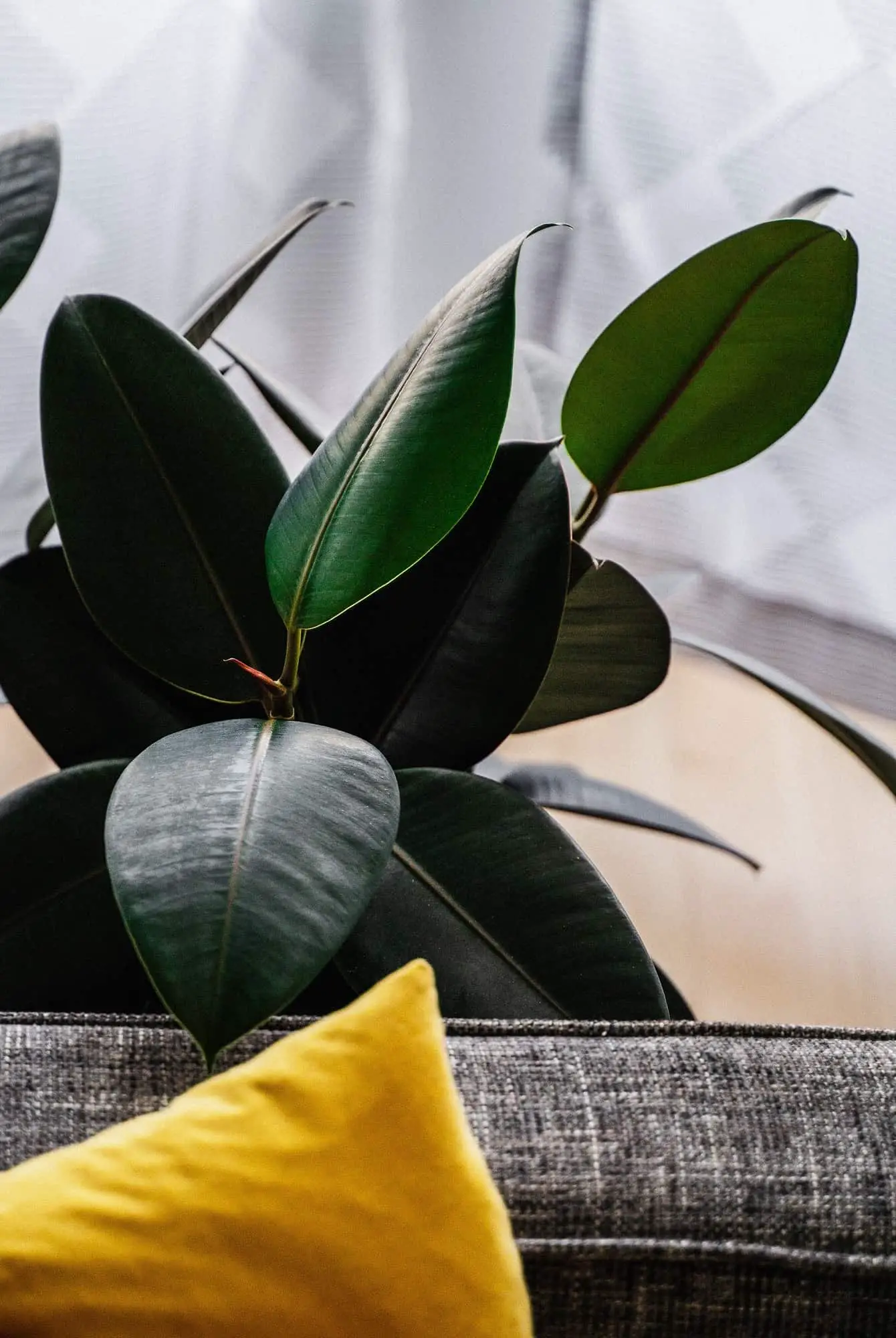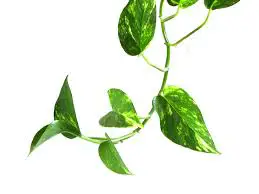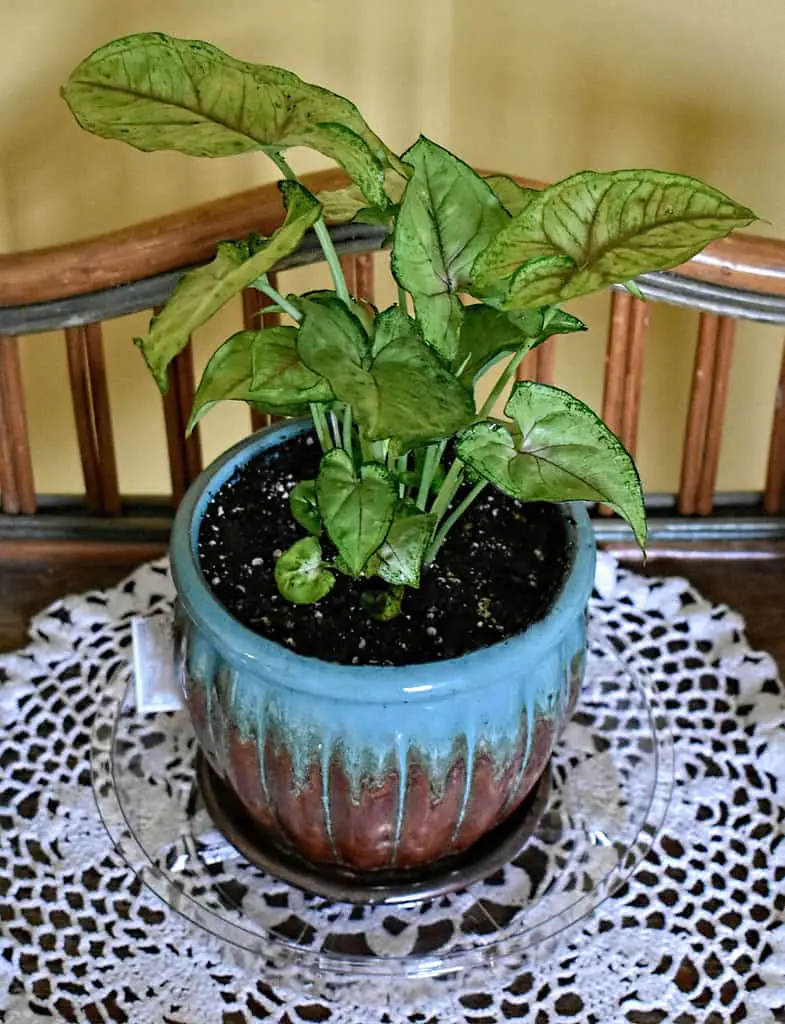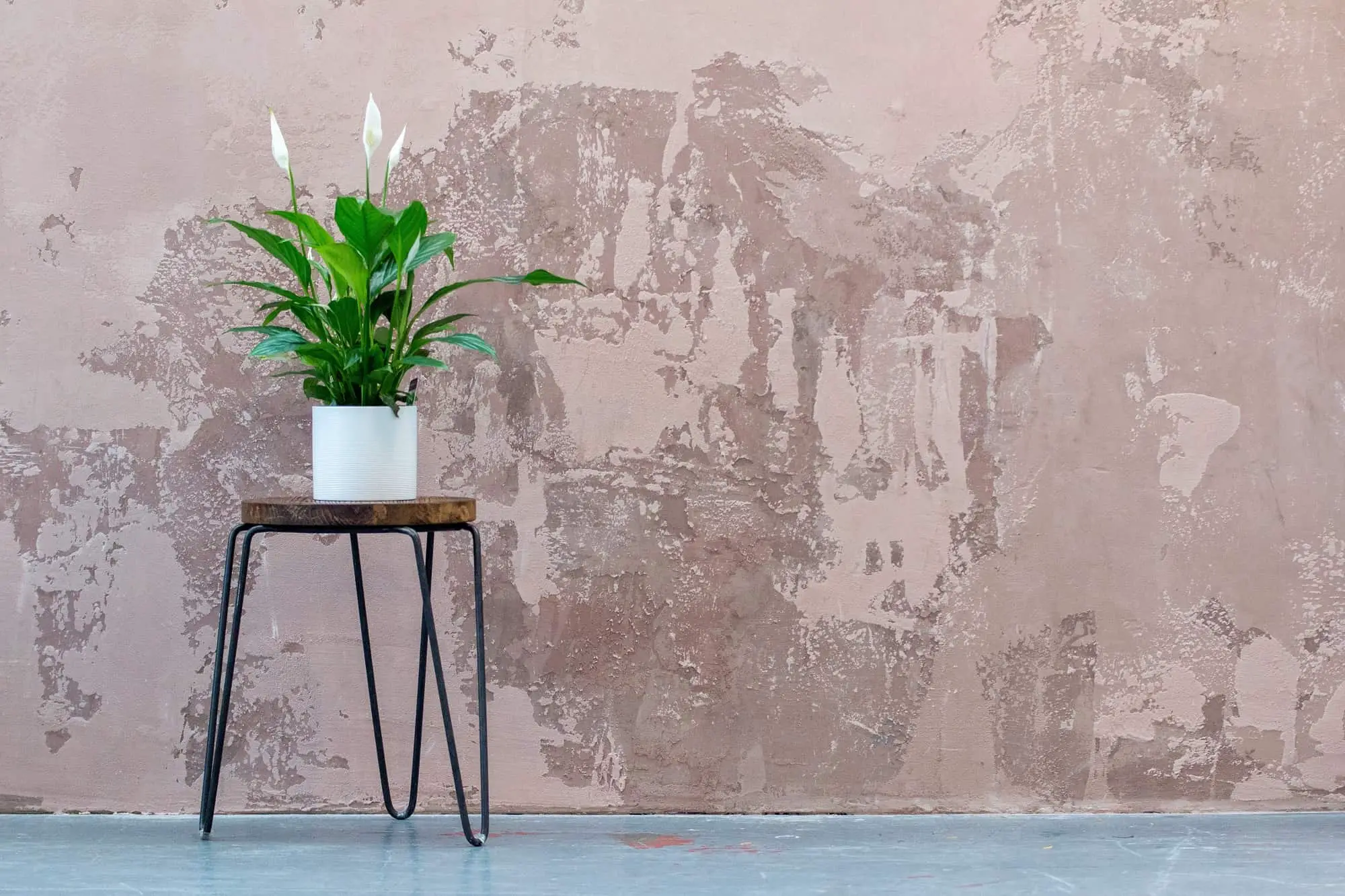Urban dwellers, which make up about 55 percent of the world’s population spend the majority of their time indoors. Unfortunately, indoor air pollution is a significant health concern. According to the United States Environmental Protection Agency (US EPA), indoor air pollution is among the top five risks to public health.
In a 2010 report, the American Academy of Allergy, Asthma and Immunology Indoor Allergen Committee suggested that an indoor air filtration could improve respiratory health. Air cleaners with HEPA filters have been shown to improve symptoms of asthma. However, filtration systems and air purifiers do not actually reduce the levels of all indoor air pollutants. Some types of air filters can actually worsen the problem.
Luckily, numerous studies have shown that houseplants can scrub harmful air pollutants from the air. These studies show that low-light plants had the potential to remove harmful pollutants in the air. Although houseplants will not remove all indoor air pollution, houseplants are an inexpensive way to at least begin addressing the issue of indoor air quality.
After looking through the literature, I have compiled a list of some of the best houseplants for cleaning indoor air. These plants include:
- Snake Plant (Dracaena trifasciata)
- Spider Plant (Chlorophytum comosum)
- Rubber Plant (Ficus elastica)
- Devil’s Ivy (Epipremnum aureum)
- Nephthytis (Syngonium podophyllum)
- Purple Waffle Plant (Hemigraphis alternata)
- Peace Lily (Spathiphyllum)
- Aloe Vera
These houseplants are great air-purifying plants because, in addition to scrubbing pollutants from the air, these plants are beautiful, hardy, and are widely available.
Indoor Air Pollutants
Before providing a detailed description of the best air purifying houseplants, I am going to discuss some common indoor air pollutants. This will help you understand what you want your plants to remove from the air.
Indoor air pollution can be up to ten times worst than air pollution outdoors (Wolverton, 2008). The following table was obtained from Gawronska and Bakera (2014) and lists some common indoor air pollutants and their source.
| Sources of Pollution | Pollutants |
|---|---|
| Outdoor air | Particulate matter (PM), nitrogen dioxide, carbon monoxide, ozone |
| Building materials, glues, paints, and furniture | Alcohols, benzene, formaldehyde and toluene |
| Carpet and wallpaper | Particulate matter (PM), bacteria, fungi, mites, dust |
| Electronic equipment such as televisions and computers | Ammonia, benzene, toluene, trichloroethylene, and particulate matter (PM) |
| Office equipment such as copy machines and laser printers | Ozone |
| Activities such as cooking, using fireplaces, ironing, smoking, and cleaning | Particulate matter (PM), nitrogen dioxide, carbon monoxide, benzene, formaldehyde |
| Biological | Ammonia, acetone, alcohols, methane, nitrogen oxides, carbon monoxide, sulfur compounds, particulate matter (PM) |
The table below lists the health effects of some common indoor air pollutants. The information in this table was obtained from the United States Environmental Protection Agency (EPA) website. It is important to note that the effect of exposure to these various pollutants depends on the length of exposure and concentration of the pollutant.
| Pollutant | Possible Health Effects |
|---|---|
| Benzene | People exposed to benzene at sufficient concentrations may experience various health effects, including cancer, damage to the immune system, reduced fertility, and other health problems |
| Carbon Dioxide | Excessive carbon dioxide can result in restlessness, drowsiness, sweating, and increased blood pressure. |
| Formaldehyde | Formaldehyde can cause irritation of the skin, eyes, nose, and throat. High levels of exposure may cause some types of cancers. |
| Nitrogen Oxide | Nitrogen Oxide can cause irritation to the eyes, nose, throat, and respiratory tract. |
| Ozone | Ozone pollution can cause chest pain, coughing, shortness of breath, and, throat irritation. |
| Particulate Matter (PM) | Particulate matter contains microscopic solids or liquid droplets that are so small that they can be inhaled and cause serious health problems. Some particles less than 10 micrometers in diameter (PM10) can get deep into your lungs and some may even get into your bloodstream. Of these, particles less than 2.5 micrometers in diameter, also known as fine particles or PM2.5, pose the greatest risk to health. |
| Toluene | Central nervous system (CNS) dysfunction (which is often reversible) and narcosis have been frequently observed in humans acutely exposed to low or moderate levels of toluene by inhalation. CNS depression and death have occurred at higher levels of exposure. |
| Trichloroethylene (TCE) | Primarily, the central nervous system is affected by acute inhalation exposure to TCE. |
| Xylene | Drowsiness, moderate fatigue, and headaches. |
Air Purifying Plants
Numerous studies have shown that plants can improve indoor air quality and make interior breathing spaces healthier.
Research of plants’ ability to remove pollutants from the air began with a study conducted by Bill Wolverton, who was a research scientist at the United States National Aeronautics and Space Administration (NASA). NASA was researching the possibility of using plants to clean air during long-term space habitation. For over 30 years, Bill Wolverton investigated how plants could be used as air-purifying systems in space missions. His research found that the air-cleaning capacity of houseplants can be improved exponentially by increasing air circulation to the roots of the plants.
Numerous studies examining the ability of various houseplants to purify indoor air have built upon Wolverton’s research. Some of these studies are summarized in the table below.
| Plant Name | Pollutants Removed | Supporting Studies |
|---|---|---|
| Aloe Vera | Formaldehyde | Xu et al. (2011) Yau et al. 2011 |
| Bamboo Palm (Chamaedorea seifrizii) | Benzene, formaldehyde, trichloroethylene | Treesubsuntorn and Thiravetyan (2012) Wolverton et al. (1989) |
| Barberton Daisy (Gerbera jamesonii) | Benzene, formaldehyde, trichloroethylene | Wolverton et al. (1989) |
| Broadleaf Lady Palm (Rhapis excelsa) | Formaldehyde, xylene | Wolverton and Wolverton (1993) |
| Chinese Evergreen (Aglaonema) | Formaldehyde, xylene, benzene, trichloroethylene | Wolverton et al. (1989) Wolverton and Wolverton (1993) Zhou et al. (2011) |
| Chrysanthemum | Formaldehyde, xylene, benzene, trichloroethylene | Wolverton et al. (1989) Wolverton and Wolverton (1993) Aydogan and Montoya (2011) |
| Coleus (Plectranthus scutellarioides) | Particulate Matter (PM) | Panyametheekul et al. (2016) |
| Common Ivy/English Ivy (Hendra Helix) | Formaldehyde | Aydogan and Montoya (2011) |
| Devil’s Ivy (Epipremnum aureum) | Formaldehyde, acetone, benzene, toluene, xylene, styrene, trichloroethylene, octane, Particulate Matter (PM) | Aydogan and Montoya (2011) Baosheng et al. (2009) Kim and Kim (2008) Orwell et al. (2004) Oyabu et al. (2001) Panyametheekul et al. (2016) |
| Dwarf Umbrella Tree (Schefflera arboricola) | Formaldehyde | Hasegawa et al. (2004) |
| Indica Azaleas (Azaela indica) | Toluene | De Kempeneer et al. (2004) |
| Nephthytis (Syngonium podophyllum) | Benzene, pentane, toluene, carbon dioxide, and formaldehyde | Chun et al. (2010) Irga et al. (2013) Kim and Lee (2008), Wolverton and McDonald (1982) Zhou et al. (2011) |
| Painter’s Palette (Anthurium andraeanum) | Formaldehyde, xylene, benzene, octane, α-pinene, toluene, trichloroethylene | Yang et al. (2009) Wolverton and Wolverton (1993) |
| Peace Lily (Spathiphyllum) | Formaldehyde, xylene, benzene, toluene, acetone, Acetone, benzaldehyde, iso-butyraldehyde, n-butyraldehyde, crotonaldehyde, diethyl ketone, methacrolein, methyl ethyl ketone | Wolverton and Wolverton (1993) Liu et al. (2007) Orwell et al. (2006) Tani and Hewitt (2009) |
| Purple Waffle Plant (Hemigraphis alternata) | Benzene, toluene, trichloroethylene, and octane | Yang et al. (2009) |
| Poinsetta (Euphorbia pulcherrima) | Formaldehyde, xylene | Wolverton and Wolverton (1993) |
| Red Edged Dracaena (Dracaena Marginata) | Formaldehyde, xylene, benzene, trichloroethylene | Wolverton et al. (1989) Wolverton and Wolverton (1993) |
| Rubber Plant (Ficus Elastica) | Benzene, pentane, and toluene, formaldehyde | Chun et al. (2010) Oyabu et al. (2003a) Cornejo et al. (1999) |
| Snake Plant (Draaena trifasciata) | Formaldehyde, acetone, benzene, and xylene, carbon dioxide, toluene, trimethylamine (fish odor) | (Siswanto et al. 2009) (Sriprapat et al. 2014) Boraphech and Thiravetyan (2015) |
| Spider Plant (Chlorophytum comosum) | Formaldehyde, carbon monoxide, nitrogen oxide, ozone, particulate matter (PM) | Papinchak et al. (2009) Xu et al. (2010) Wolverton (1984) Gawronska and Bakera (2014) |
| Sword Fern (Nephrolepis exaltata) | Formaldehyde, benzene, xylene | Hasegawa et al. (2004) Orwell et al. (2004) Wolverton and Wolverton (1993) |
| Weeping Fig (Ficus benjamina) | Formaldehyde, xylene, trichloroethylene, benzene, octane, toluene | Kim and Lee (2008) Wolverton and Wolverton (1993) Yang et al. (2009) |
Best Air Purifying Houseplants
Some of the air-purifying abilities of the plants listed in the table above are described in further detail below. In my opinion, these are the best air purifying houseplants because, in addition, to effectively removing harmful pollutants from the air, they are beautiful, easy to care for, and widely available at most gardening centers.
Snake Plant (Dracaena trifasciata)

Draaena trifasciata is a type of succulent in the Asparagaceae family. It is native to tropical parts of Africa and is commonly known as Mother-in-Law’s Tongue, Snake Plant, and Saint George’s Sword. Snake Plant is a popular houseplant because it is tolerant of a wide range of conditions and is relatively difficult to kill. This plant also filters the air in your home well.
Snake Plant removes a variety of pollutants from indoor air. For example, a study conducted by researchers at Brawijaya University in Indonesia found that a botanical biofilter made of Snake Plant and Spider Plant effectively removes pollutants such as volatile organic compounds (VOCs), formaldehyde, acetone, benzene, and xylene (Siswanto et al. 2009).
In addition, a study that examined the benzene removal efficiency of eight houseplants found that Snake Plant had the highest removal efficiency (Treesubsuntorn and Thiravetyan, 2012).
Another study conducted by researchers at the King Mongkut’s University of Technology Thonburi in Thailand found that Snake Plant efficiently removes toluene from the air (Sriprapat et al. 2014). Toluene is a pollutant associated with paint thinner.
Research has even shown that Snake Plant effectively removes trimethylamine (fish odor) from the air (Boraphech and Thiravetyan, 2015).
Finally, Snake Plant removes carbon dioxide and emits oxygen, especially at night. This is because Snake Plant, like many succulents, is a Crassulacean-Acid Metabolism (CAM) plant. This means that the plant opens its stomata at night in order to absorb carbon dioxide and release oxygen.
Spider Plant (Chlorophytum comosum)

Chlorophytum comosum, which is commonly known as Spider Plant, Spider Ivy, St. Bernard’s Lily, and Ribbon Plant is another very common houseplant. It easily adapts to a variety of conditions and is easy to grow. They are native to the tropical areas of Southern Africa but have also become naturalized in Western Australia.
The National Aeronautics and Space Administration (NASA), which is an independent agency of the United States Federal Government, conducted a study that evaluated the ability of several houseplants to remove pollutants from a controlled chamber designed to simulate indoor environments. The results found that Spider Plant and Golden Pothos most effectively reduced common pollutants such as formaldehyde, carbon monoxide, and nitrogen oxide (Wolverton, 1984).
Another research study conducted at Pennsylvania State University found that Spider Plant and Golden Pothos also help remove ozone from indoor air environments (Papinchak et al. 2009). Exposure to ozone can cause respiratory problems.
A study conducted by researchers at the Beijng University of Chemical Technology found that Spider Plant may be effective in removing formaldehyde from indoor air. This occurs because formaldehyde was absorbed by the plant roots, and microbial formaldehyde degradation was enhanced by the root fluids (Xu et al. 2010).
Finally, an experiment conducted by researchers at the Warsaw University of Life Sciences in Poland showed that Spider Plant decreases the amount of particulate matter (PM) in the air. The plant does this by accumulating PM on its waxy leaves (Gawronska and Bakera, 2014).
Rubber Plant (Ficus elastica)

Ficus elastica, which is commonly known as Rubber Plant or Indian Rubber Tree, is a common houseplant that is usually available as either a medium-sized plant or a small indoor tree. It is native to the eastern parts of South Asia. Rubber Plant was once used to produce inferior natural rubber. Today, 99 percent of the world’s latex comes from the Rubber Tree (Hevea brasiliensis) which is native to the Amazon region of South America. It is important to note that Rubber Tree is not related to the Rubber Plant.
A research experiment conducted by scientists at Konkuk University in South Korea found that plants such as Rubber Plant effectively removed harmful pollutants such as benzene, pentane, and toluene. This study also found that microbes living in the rhizosphere, which is the area in the vicinity of the roots, played a significant role in removing VOCs from indoor air (Chun et al. 2010).
Rubber Plant may also be effective in reducing the concentration of formaldehyde in indoor air, but there are conflicting views on this. Some research studies such as Oyabu et al. (2003a) found that Rubber Plant does effectively remove formaldehyde. However, a study conducted by researchers at Zhongkai University of Agriculture and Engineering in China found that Rubber Plant does not effectively remove formaldehyde from indoor air (Ou et al. 2012).
Devil’s Ivy (Epipremnum aureum)

Epripremnum aureum, commonly known as Devil’s Ivy or Golden Pothos, is a tropical vine plant native to the Solomon Islands. The leaves are naturally variegated which results in a yellow-marbled color. Devil’s Ivy is a great houseplant because it requires little care and tends to have very few pest problems. Devil’s Ivy tends to do well in kitchen or bathroom environments. The vines can grow up to 40 feet long but tend to be shorter when grown indoors.
As previously mentioned, NASA conducted an experiment that evaluated the ability of several houseplants to remove pollutants from a controlled chamber designed to simulate indoor environments. The results found that Devil’s Ivy and Spider Plant most effectively reduced common pollutants such as formaldehyde, carbon monoxide, and nitrogen oxide (Wolverton, 1984).
As previously discussed, a research study conducted at Pennsylvania State University found that Devil’s Ivy and Spider Plant help remove ozone from indoor air environments (Papinchak et al. 2009).
It is important to note that the American Society for the Prevention of Cruelty to Animals (ASPCA) classifies Devil’s Ivy as toxic to cats and dogs due to the presence of insoluble raphides. It is important to make sure you put this plant in a spot that is out the reach of pets and children.
Nephthytis (Syngonium podophyllum)

The Syngonium podophyllum, which is also known as Nephthytis or Arrowhead Plant, is a tropical, slow-growing vine. It is a hardy houseplant that can either be grown as a hanging plant or a potted plant. Nephthysis is generally easy to propagate with stem cuttings.
Another research experiment conducted by scientists at Konkuk University in South Korea found that plants such as Nephthytis effectively removed harmful pollutants such as benzene, pentane, and toluene. This study also found that microbes living in the rhizosphere, which is the area in the vicinity of the roots, played a significant role in removing VOCs from indoor air (Chun et al. 2010).
A study conducted by researchers at the University of Technology, Sydney examined the ability of Nepthysis plants to remove pollutants from indoor air. The experiment looked at Nepthysis plants growing in soil as well as Nepthysis plants growing hydroponically. The results of the study confirmed that Nepthysis effectively removes benzene from indoor air. However, the results indicated that Nepthysis growing in soil removed more benzene than Nepthysis grown hydroponically (Irga et al. 2013).
Nephthytis also removes a significant amount of carbon dioxide from the air. Irga et al. (2013) found that hydroponically grown Nepthysis plants remove more carbon dioxide than Nepthysis plants grown in soil.
Finally, Nepthysis is effective in removing formaldehyde from the air in indoor spaces (Kim and Lee (2008), Wolverton and McDonald (1982), and Zhou et al. (2011)).
Purple Waffle Plant (Hemigraphis alternata)

Hemigraphis alternata, which is commonly known as Purple Waffle Plant or Red Ivy, is a tropical plant native to India and Java. They produce little white flowers during the summer. These plants thrive in high humidity. If you live in a drier home, try using a pebble tray. Simply put some pebbles in a plant saucer and fill the saucer with water. Set your plant on top of the pebble tray or close to the pebble tray.
Purple Waffle Plant is one of the best houseplants for removing volatile organic carbons (VOCs).
A study conducted by researchers at the University of Georgia evaluated the ability of 28 houseplants to remove five volatile indoor pollutants including benzene, toluene, aliphatic hydrocarbon (octane), trichloroethylene (TCE), and terpene (α-pinene). Of the 28 houseplants, Purple Waffle Plant had the highest removal efficiency for benzene, toluene, TCE, and octane. It had the second-highest removal efficiency for terpene (α-pinene) (Yang et al. 2009).
In addition to being a good air purifier, Purple Waffle Plant is a good houseplant for pet owners. According the ASPCA, it is not toxic to cats or dogs.
Peace Lily (Spathiphyllum wallisii)

Spathiphyllum wallisii, which is commonly known as Peace Lily, is a common houseplant that produces white blooms. They are native to the tropical regions of the Americas and Southeast Asia. Peace Lily is a beautiful houseplant that works well with a variety of home decor. These plants do not need to be watered very frequently. If you notice that your Peace Lily starts to wilt every 2 to 3 days, try planting your Peace Lily in a larger container.
A study conducted by researchers at Portland State University evaluated the ability of five plants to remove ozone from indoor air. The study found that Peace Lily had the best ozone removal efficiency when exposed to light conditions characteristic of indoor environments (Abbass et al. 2017).
However, Peace Lily is not one of the best houseplants for removing volatile organic compounds (VOCs). Researchers at the University of Georgia conducted a study that evaluated the ability of 28 houseplants to remove various VOCs. The results indicated that Peace Lily had poor removal efficiency when compared to other plants examined in the study (Yang et al. 2009).
Another experiment conducted by researchers in Beijing confirmed that Peace Lily is not among the best houseplants for removing VOCs. Of the 73 types of ornamental plants evaluated in this study, Peace Lily was not in the top 10 for benzene removal efficiency (Liu et al. 2007).
Aloe Vera

Aloe Vera is one of my favorite houseplants. I like its appearance, and it seems to grow very well in my home. This succulent has a long history of being used for medicinal purposes. Records showed that the ancient Egyptians used the Aloe Vera plant for medicine. Today, people still use Aloe Vera to treat sunburns. Aloe Vera is native to North Africa, Southern Europe, and the Canary Islands.
To successfully grow Aloe Vera indoors, I recommend planting it in porous pot (e.g., terra cotta or concrete) with well-draining soil. It is also important to place your Aloe Vera is a sunny spot. Otherwise, it will go dormant and stop growing. Like other succulents, you should only water your Aloe Vera after the soil has dried completely.
In addition to its rich history and minimal care requirements, Aloe Vera is a beneficial plant because it improves indoor air quality. An experiment conducted by researchers in Hong Kong evaluated the ability of Aloe Vera and Snake Plant to absorb formaldehyde. The results indicated that Aloe Vera was able to absorb more formaldehyde from indoor air (Yau et al. 2011).
A study conducted by Xu et al. (2011) also showed that Aloe Vera was effective in removing formaldehyde from indoor air.

